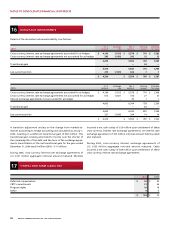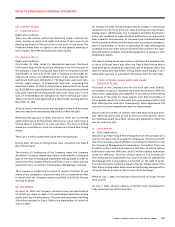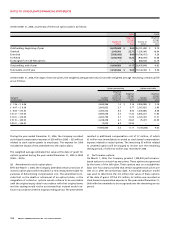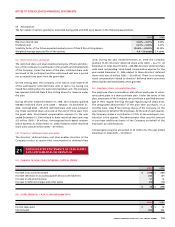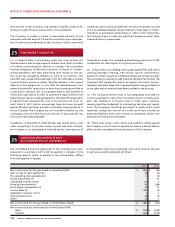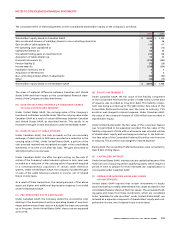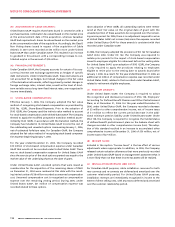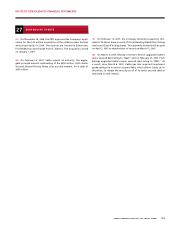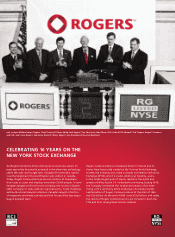Rogers 2006 Annual Report Download - page 112
Download and view the complete annual report
Please find page 112 of the 2006 Rogers annual report below. You can navigate through the pages in the report by either clicking on the pages listed below, or by using the keyword search tool below to find specific information within the annual report.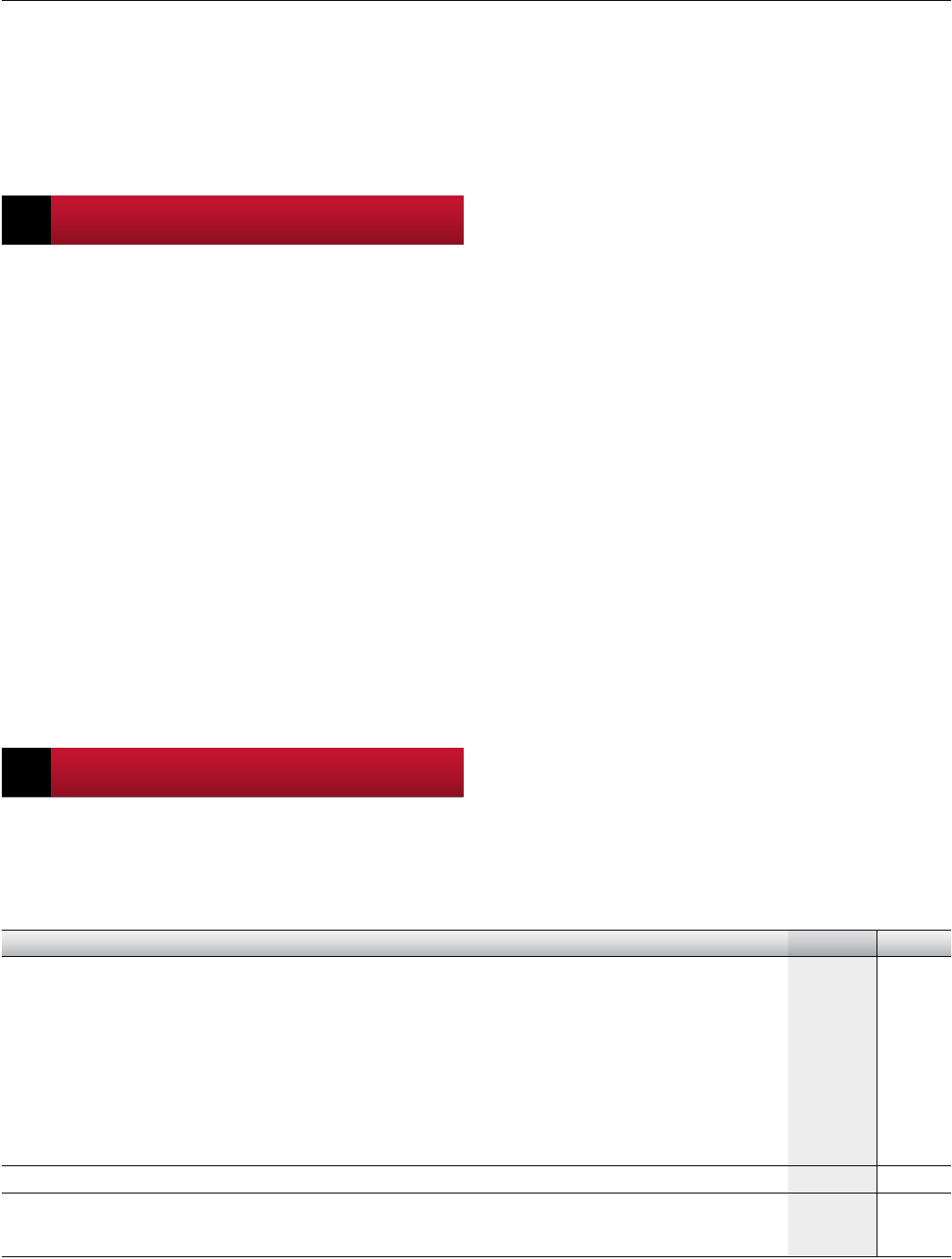
108 RO GERS CO MMU NICAT ION S IN C . 20 0 6 ANN UA L RE POR T
NOTES TO CONSOLIDATED FINANCIAL STATEMENTS
25 CON TING ENT LIA BILI TIES
(A) In August 2004, a proceeding under the Class Actions Act
(Saskatchewan) was brought against Wireless and other providers
of wireless communications services in Canada. The proceeding
involves allegations by Wireless customers of breach of contract,
misrepresentation and false advertising with respect to the sys-
tem access fee charged by Wireless to some of its customers. The
plaintiffs seek unquantified damages from the defendant wireless
communications service providers. Wireless believes it has a good
defence to the allegations. In July 2006, the Saskatchewan court
denied the plaintiffs’ application to have the proceeding certified as
a class action. However, the court granted leave to the plaintiffs to
renew their applications in order to address the requirements of the
Saskatchewan class proceedings legislation. The plaintiff’s application
to address these requirements is set to be heard by the Court on
April 4 and 5, 2007. Similar proceedings have also been brought
against Wireless and other providers of wireless communications in
most of Canada. The Company has not recorded a liability for this
contingency since the likelihood and amount of any potential loss
cannot be reasonably estimated.
In addition, on December 9, 2004, Wireless was served with a court
order compelling it to produce certain records and other informa-
tion relevant to an investigation initiated by the Commissioner of
Competition under the misleading advertising provisions of the
Competition Act with respect to its system access fee.
(B) In April 2004, a proceeding was brought against Fido and others
claiming damages totalling $160 million, specific performance,
breach of contract, breach of confidence and breach of fiduciary duty.
The proceeding is seeking to add Inukshuk Wireless Partnership, the
Company’s 50% owned joint venture, as a party to the action. The pro-
ceeding is at an early stage. The Company believes it has good defences
to the claim and no amounts have been provided in the accounts.
(C ) The Company believes that it has adequately provided for
income taxes based on all of the information that is currently avail-
able. The calculation of income taxes in many cases, however,
requires significant judgment in interpreting tax rules and regula-
tions. The Company’s tax filings are subject to audits which could
materially change the amount of current and future income tax
assets and liabilities, and could, in certain circumstances, result in the
assessment of interest and penalties.
(D) There exist certain other claims and potential claims against
the Company, none of which is expected to have a material adverse
effect on the consolidated financial position of the Company.
26 CANADIAN AND UNITED STATES
ACCOUNTING POLICY DIFFERENCES
The consolidated financial statements of the Company have been
prepared in accordance with GAAP as applied in Canada. In the
following respects, GAAP, as applied in the United States, differs
from that applied in Canada.
If United States GAAP were employed, net income (loss) for the year
in each year would be adjusted as follows:
2006 2005
Net income (loss) for the year based on Canadian GAAP $ 622 $ (45)
Gain on sale of cable systems (b) (4) (4)
Pre-operating costs capitalized (c) 5 (9)
Equity instruments (d) – 16
Capitalized interest, net (e) 14 3
Financial instruments (h) 19 (286)
Stock-based compensation (i) (2) 14
Income taxes (k) 128 (2)
Installation revenues, net (l) 1 2
Interest expense (m) (2) (3)
Other (1) 1
Net income (loss) for the year based on United States GAAP $ 780 $ (313)
Net income (loss) per share based on United States GAAP:
Basic $ 1.23 $ (0.54)
Diluted 1.22 (0.54)
their services to the Company, and maintains liability insurance for
its directors and officers as well as those of its subsidiaries.
The Company is unable to make a reasonable estimate of the
maximum potential amount it would be required to pay counterpar-
ties. The amount also depends on the outcome of future events and
conditions, which cannot be predicted. No amount has been accrued
in the consolidated balance sheets relating to these types of indem-
nifications or guarantees at December 31, 2006 or 2005. Historically,
the Company has not made any significant payments under these
indemnifications or guarantees.


